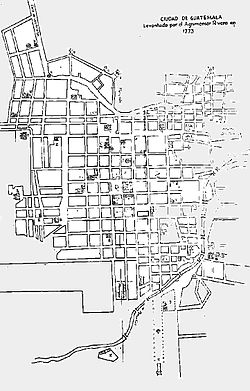| Convent and Church of the Order of Preachers | |
|---|---|
 Monastery courtyard | |
| General information | |
| Architectural style | Spanish seismic baroque |
| Location | Antigua Guatemala, |
| Coordinates | 14°33′30.928″N90°43′36.430″W / 14.55859111°N 90.72678611°W |
| Demolished |
|
| Owner | Private property |
This article relies largely or entirely on a single source .(January 2022) |
Santo Domingo Church and Monastery is a ruined monastery in Antigua Guatemala, Guatemala. Its history can be traced back to 1538 when the Dominicans arrived in Guatemala. It had two towers with ten bells and the monastery was filled with treasures. The monastery was destroyed in the 1773 Santa Marta earthquake. Today, part of the ruins have been transformed into a hotel, the Hotel Casa Santo Domingo. [1]

